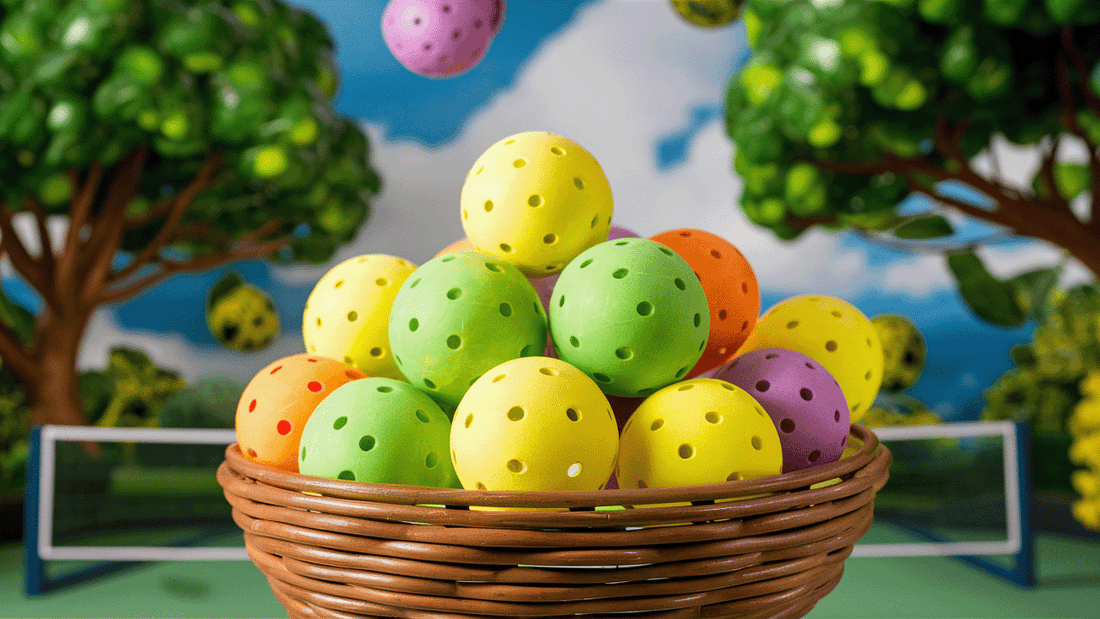
The Rise of Pickleball: A Beginner's Guide to the Fastest Growing Sport in America
Share
Pickleball is taking the world by storm, and it’s not hard to see why. This fun, engaging sport combines elements of tennis, table tennis, and badminton, making it accessible and enjoyable for individuals of all ages. Whether you're interested in socializing with friends, getting a good workout, or competing in matches, pickleball offers something for everyone. In this ultimate beginner's guide, we will explore the rise of pickleball, its rules, strategies, and tips to help you get started on your pickleball journey.
The Growth of Pickleball: A Brief History
Pickleball was invented in 1965 on Bainbridge Island, Washington, by three fathers—Joel Pritchard, Bill Bell, and Barney McCallum—who were looking for a way to entertain their children. They improvised with a badminton court, a perforated plastic ball, and ping-pong paddles, leading to the birth of what we now know as pickleball. The name “pickleball” is believed to come from either the Pritchard’s family dog, Pickles, or from the term “pickle boat,” referring to a crew made up of leftover players from other teams.
Since its inception, pickleball has steadily gained popularity and has evolved into a formal sport with its own set of rules, tournaments, and associations. The USA Pickleball Association (USAPA) was formed in 2005 to promote the sport and establish standardized rules. As of October 2023, pickleball has experienced exponential growth, with millions of people playing across the United States and beyond, making it the fastest-growing sport in the nation.
What Makes Pickleball So Appealing?
The reasons for pickleball's surging popularity are numerous. Here are some of the key factors contributing to its appeal:
1. Accessible to All Ages
One of the most attractive features of pickleball is that it can be played by individuals of all ages and skill levels. Families can enjoy the game together, while young athletes have the opportunity to develop their skills in a competitive environment. Local communities often organize beginner clinics and recreational play, making learning the sport easy and fun.
2. Low Impact and Healthy Exercise
Pickleball is a low-impact sport that provides an excellent cardiovascular workout without putting excessive strain on your joints. The court size is smaller than a tennis court, requiring less running, which is especially beneficial for older players or those new to exercise. It offers a full-body workout that improves strength, balance, and coordination.
3. Social Interaction
Pickleball is often played in doubles format, promoting teamwork and social interaction. It’s a great way to meet new people, make new friends, and engage with your community. Many local clubs and organizations host regular events, leagues, and tournaments, creating a sense of camaraderie amongst players.
Understanding the Basic Rules of Pickleball
While pickleball is easy to grasp, knowing the basic rules helps you play more effectively and enjoyably. Here’s a rundown of the essential rules:
1. The Court and Equipment
Pickleball can be played indoors or outdoors on a court that measures 20 feet wide and 44 feet long for doubles matches. It employs a net that stands 36 inches high at the sidelines and 34 inches in the center. Players use a paddle and a lightweight plastic ball with holes. Both paddles and balls can vary in quality, so players often choose what suits their game best.
2. Serving
The game begins with an underhand serve from the right side of the court. The server must hit the ball below their belly button (though it keeps changing), and it must land in the diagonal service court of the opponent. The serve must clear the non-volley zone (often called the “kitchen”) at the net, which is a seven-foot area where players cannot volley the ball.
3. Scoring
Pickleball is typically played to 11 points, and a team must win by at least 2 points. Points can only be scored by the serving team. If the serving team misses a serve or fails to return the ball before it bounces twice, the opposing team earns a point, and the serve switches to the other team.
Some tournaments utilize what is called "rally scoring." This is where each point counts. During Major League Pickleball events this is used.
4. Rallying
After the serve, each team must allow the ball to bounce once before returning it, known as the “double bounce rule.” Players then engage in a rally, hitting the ball back and forth until one team fails to return it. This is not to be confused with a volly, which is a ball that is hit before it has bounced. The game continues until a team reaches the required points to win.
Essential Tips for Beginners
Now that you’re familiar with the rules, let’s explore some essential tips that can help you get off to a great start on the pickleball court:
1. Invest in Good Equipment
While there are budget-friendly options for paddles and balls, investing in a quality paddle can significantly enhance your playing experience. Make sure to choose a paddle that feels comfortable and suits your playing style.
2. Practice Your Serve
Your serve is an important part of the game, providing an opportunity to gain the upper hand right from the start. Spend some time practicing your serves to develop consistency and accuracy, allowing you to control the pace of play.
3. Master the Non-Volley Zone
Understanding and practicing the non-volley zone is crucial. This area requires players to be more strategic and patient during rallies. Avoiding jumping into the kitchen too early will prevent unnecessary faults and help you to maintain control.
4. Communicate with Your Partner
Effective communication with your partner in doubles is key to success. Call out when you are going for a shot and establish a strategy for your placements. Teamwork often proves to be more advantageous than individual talent on the court.
5. Stay Patients and Have Fun
Like any sport, pickleball takes time to learn and master. Focus on improving your skills gradually and enjoy the social aspects of the game. Remember, the primary goal is to have fun!
Pickleball Communities and Resources
As pickleball grows in popularity, numerous communities and resources have emerged to support both beginners and seasoned players. Here are a few places to get involved:
- Local Leagues: Many cities organize pickleball leagues where players can compete and meet fellow enthusiasts.
- Pickleball Clubs: Joining a pickleball club can provide you with regular playing opportunities and access to coaching.
- Online Communities: Websites, forums, and social media groups allow players to connect, share tips, and stay updated on local events.
- YouTube Tutorials: Many experienced players and coaches offer instructional videos that cover techniques, strategies, and tips.
The Future of Pickleball: What Lies Ahead?
The future of pickleball looks bright, with numerous organizations investing in facilities, courts, and community outreach initiatives to introduce more players to the game. As the sport continues to grow, we can expect to see more tournaments, professional leagues, and international competitions making their mark.
As awareness of pickleball expands, it will likely lead to a more knowledgeable and engaged community of players and fans. Given the health and social benefits of the sport, it can play a significant role in promoting a more active lifestyle, especially among younger generations.
Get Out and Play!
Now that you have your beginner's guide to pickleball, it's time to grab your paddle and head to your local court! Whether you're looking to enjoy a casual game with friends or sharpen your skills for competitive play, the world of pickleball awaits you. With its positive atmosphere, accessible gameplay, and growing community, you'll find it easy to dive into this joyful sport. Embrace the excitement, meet new friends, and experience the many rewards that pickleball has to offer. Happy playing!
